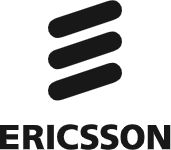Even before its publication, the standard essential patents (SEP) regulation divided stakeholders in Europe’s intellectual property ecosystem. But since publication, criticism has only mounted. SEP holders, IP experts, and the USPTO director have raised alarm bells over the risk to the West’s technology leadership, while the head of the UPC, member states, and research organisations have proposed more scrutiny, questioning the need for regulation as well as its lack of proportionality.
Despite these concerns, the European Parliament is now set to mirror the Commission’s rushed approach, forcing the regulation through at breakneck speed before the European elections. Put forward only in April this year, the regulation could be voted on by Q1 2024.
That’s a tight timeline when the task is upending a long-standing, global system in favor of untested methods and procedures. Given the concerns raised over the proposal’s structural flaws, lack of market data justifying its need, unbalanced approach, and implications for EU leadership in critical technologies like 5G and 6G, why aren’t the Commission and Parliament taking the time that’s needed to get this right?
As a company with decades of experience in developing and implementing technical standards, we support the proposal’s goals to improve SEP licensing and incentivise wide participation in standards development. But the current proposal will fall short of these objectives. If anything, it risks doing more damage than good.
Disrupting global systems for licensing and trade – why the rush?
Cellular standards are global. By guaranteeing seamless interoperability between technologies throughout the world, standards facilitate economic growth and allow new technologies to scale at speed.
Enabling that interoperability has taken enormous effort. Over more than 40 years, industry stakeholders have invested in R&D and worked according to consensus – resolving issues and creating an increasingly effective global standardisation framework.
Avanci’s recently launched 5G Connected Vehicle Licensing Program is the latest example of how the market can find solutions – without the need for massive regulatory overhaul. Indeed, the Commission’s own empirical study finds that (1) cases of SEP litigation have only decreased since 2014, and (2) nothing about today’s SEP licensing conditions systematically discourages holders or implementers from developing or implementing SEPs.
Despite this, with its proposed heavy-handed intervention, the EU is threatening to abandon this long-standing, global, and consensus-driven process in favor of regional fragmentation.
The biggest loser: the EU
Policymakers should be given the time to ask what this fragmentation could mean for the EU – its consumers, businesses, digital transition, and global standing – and if or how it can be avoided.
In today’s global economy, innovating and contributing to standards offers a competitive edge. Yet, the SEP regulation signals that the EU is turning its back on its own champions.
The Commission’s proposal ignores the strength of European companies’ patent portfolios and appears to be based on a misguided assumption that most SEP holders reside elsewhere in the world. This is simply not the case. For example, with our current portfolio of IPR licensing contracts, we estimate full-year 2023 IPR licensing revenues of approximately 11 billion Swedish crowns. Moreover, analysis shows that we lead among companies globally in our share of 5G patent families when essentiality and jurisdictional quality filters are applied.
Overall, the proposed regulation’s rushed timeline, flawed structure, broad scope, untested procedures, and limited means threaten the EU’s competitiveness in developing the key standardised technologies of tomorrow.
As it stands, the risks outweigh the benefits. Policymakers need time to measure the regulation’s potential impact, engage with SEP licensing stakeholders, and determine the best way forward.
It’s now time to hit pause.
In partnership with

This article was produced in partnership with Ericsson. Ericsson enables communications service providers and enterprises to capture the full value of connectivity. The company’s portfolio spans Networks, Cloud Software and Services, Enterprise Wireless Solutions, Global Communications Platform, and Technologies and New Businesses.
Sign up to The Parliament's weekly newsletter
Every Friday our editorial team goes behind the headlines to offer insight and analysis on the key stories driving the EU agenda. Subscribe for free here.